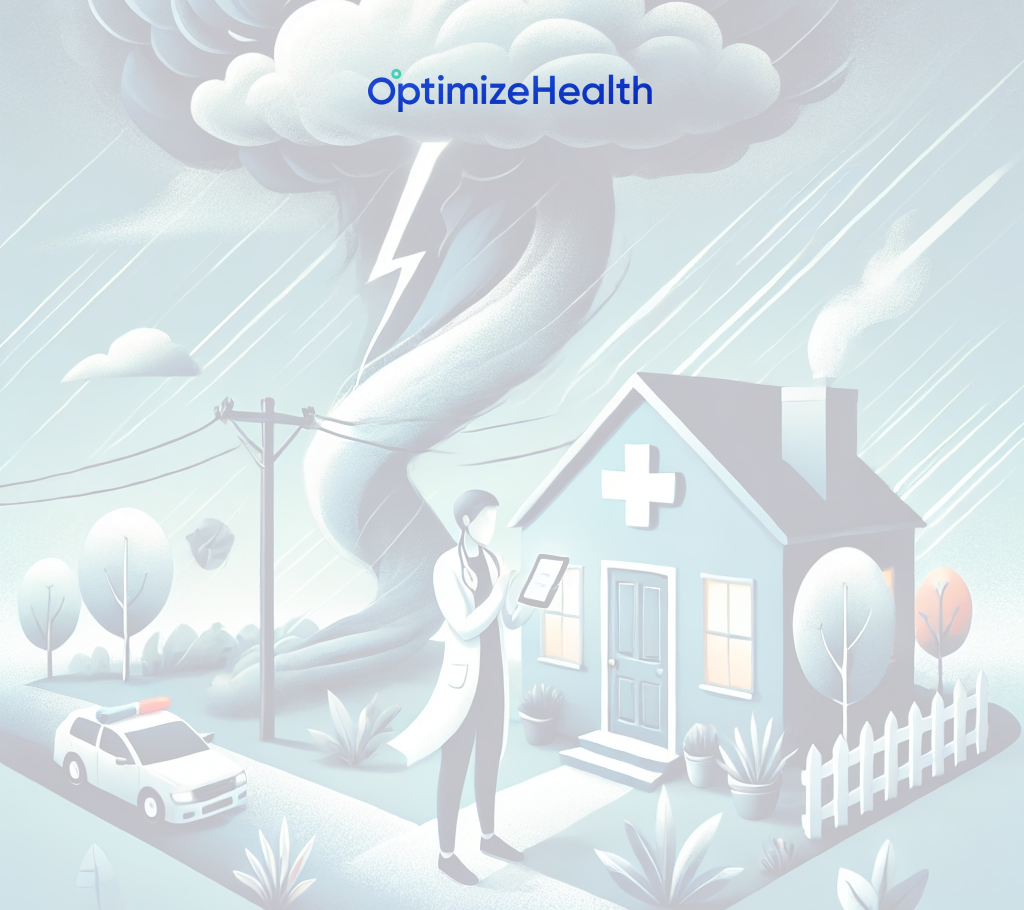Introduction
Severe weather events, such as hurricanes, floods, or winter storms, can disrupt everyday life and pose significant risks, especially for those managing chronic health conditions like diabetes, heart disease, or asthma. Proper preparation is key to ensuring your health and safety during these challenging times. In this blog, we’ll explore essential steps you can take to protect your health, manage your condition effectively, and access medical resources during severe weather.
1. Preparing for Severe Weather: Your Health Comes First
- Create an Emergency Health Action Plan: Work with your healthcare provider to create a personalized emergency plan. This plan should include details such as:
- A list of medications, doses, and prescribing doctor(s).
- The nearest pharmacies and medical facilities that will remain open during emergencies.
- Emergency contacts including family, friends, and healthcare providers.
- Secure a Two-Week Supply of Medications and Medical Supplies: Ensure you have an adequate supply of medications and medical equipment (e.g., glucose meters, inhalers, oxygen tanks). Consider asking your pharmacy or doctor about early refills during storm warnings.
- Pack a Comprehensive Emergency Kit: In addition to medical supplies, include:
- Copies of medical records and prescription lists in waterproof bags.
- A portable power bank for medical devices like nebulizers, CPAP machines, or blood pressure monitors.
- Non-perishable, condition-appropriate food options (e.g., low-sodium, low-sugar foods for those with heart disease or diabetes).
2. Staying Safe During the Storm
- Adhere to Your Care Plan: Even when routines are disrupted, it’s crucial to maintain your treatment regimen. Set reminders on your phone for medication times and meal schedules to stay on track.
- Utilize Telehealth Services: If you can’t access a clinic, reach out to telehealth services for virtual consultations. Many clinics offer remote monitoring and support that can be crucial when physical visits are not possible.
- Maintain Communication and Access to Information:
- Have a battery-operated radio and charged phones to receive updates on storm progress and emergency services availability.
- Stay in touch with your care team through secure patient portals, apps, or phone calls.
3. Post-Storm: Returning to Routine and Recovery
- Evaluate Your Home Environment: Before re-entering your home, check for potential hazards like flooding, mold growth, or electrical issues that could worsen respiratory or cardiovascular conditions.
- Access Replacement Medication: If your medication supply is compromised, visit local clinics or pharmacies for emergency replacements. Many organizations set up temporary medical aid centers during and after storms to assist those in need.
- Monitor Symptoms Closely: Post-storm stress can trigger flare-ups or worsen conditions. Pay close attention to symptoms like shortness of breath, blood sugar fluctuations, or chest pain, and seek medical attention as needed.
4. Tips for Managing Specific Chronic Conditions
- Diabetes:
- Monitor blood glucose levels more frequently as stress and irregular eating can cause fluctuations. Have fast-acting sources of glucose (like glucose tablets) and snacks readily available.
- Use insulated bags with cold packs to keep insulin within the recommended temperature range if refrigeration is unavailable.
- Heart Disease and Hypertension:
- Ensure a supply of medications like beta-blockers or nitroglycerin. Monitor blood pressure using a portable cuff and avoid physical exertion that could exacerbate symptoms.
- Stress management is essential—consider meditation apps or calming exercises that can be done even during evacuation.
- Asthma and COPD:
- Carry an emergency inhaler and nebulizer with a backup power source. If air quality is poor post-storm, use air-purifying masks or seek refuge in indoor spaces with clean air, like public shelters.
- If your medication supply is compromised, reach out to pharmacies offering emergency assistance.
- Kidney Disease:
- Patients on dialysis should have backup plans if their local center is closed. Contact healthcare providers to identify alternative facilities or mobile dialysis units that may be available.
- Hydration is key, but it’s essential to manage fluid intake as per your doctor’s advice to avoid complications.
5. Leveraging Remote Care and RPM Technology During Storms
Many healthcare providers and remote monitoring programs offer support during emergencies:
- Telehealth and Remote Patient Monitoring (RPM):
- RPM programs can track vital signs like heart rate, blood pressure, and oxygen levels in real-time, allowing healthcare providers to adjust care plans remotely if patients are unable to visit the clinic.
- If you’re enrolled in a telehealth or RPM program, make sure your devices are charged and functioning properly. These services can be invaluable for managing conditions without leaving the safety of your home.
6. FQHCs and Support Services: A Lifeline During Emergencies
Federally Qualified Health Centers (FQHCs) and community clinics often provide critical support during severe weather events. These centers:
- Offer free or low-cost services and medications to patients, ensuring continuity of care for those in need.
- Coordinate with local shelters to provide medical support for chronic conditions like asthma, diabetes, and heart disease.
Conclusion
Preparing for severe weather is crucial, especially for individuals managing chronic conditions. By proactively planning and leveraging available healthcare resources, you can protect your health and ensure that care continues, no matter the circumstances. Programs like RPM and telehealth offer a safety net, allowing you to stay connected with your healthcare provider, even in challenging times.
Taking these steps will provide peace of mind and ensure you remain in control of your health during severe weather events.
